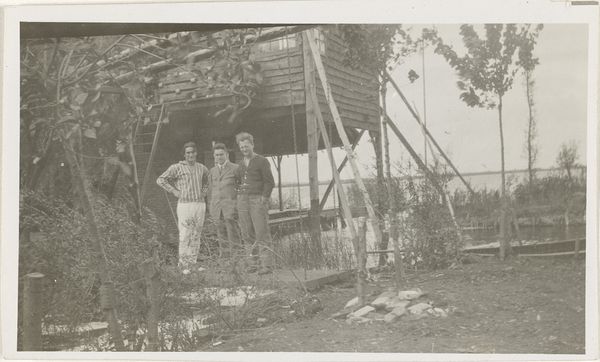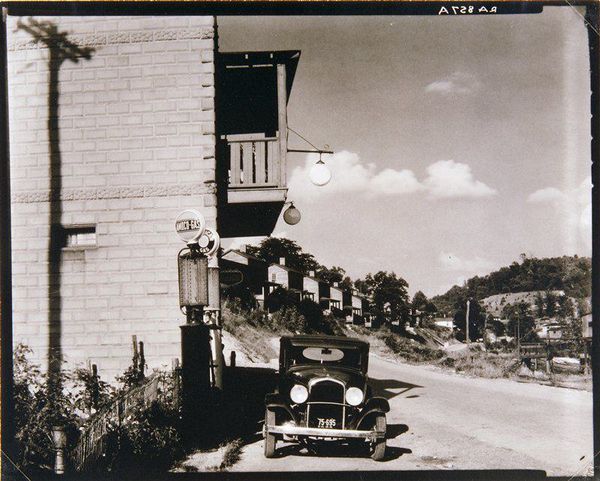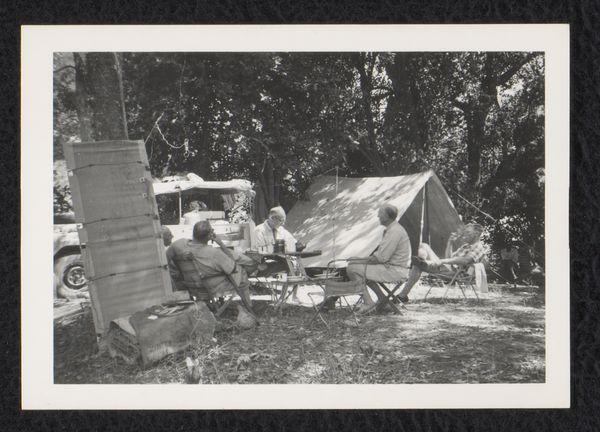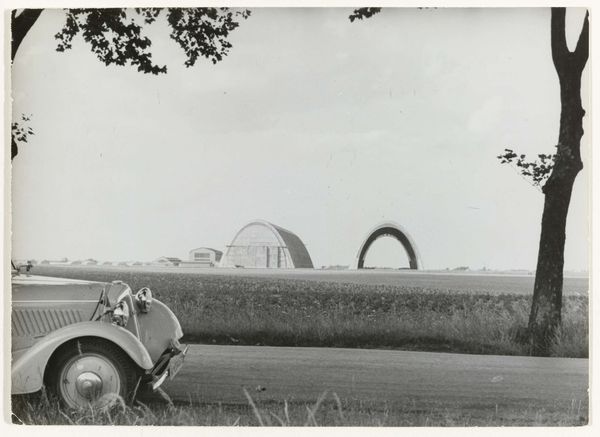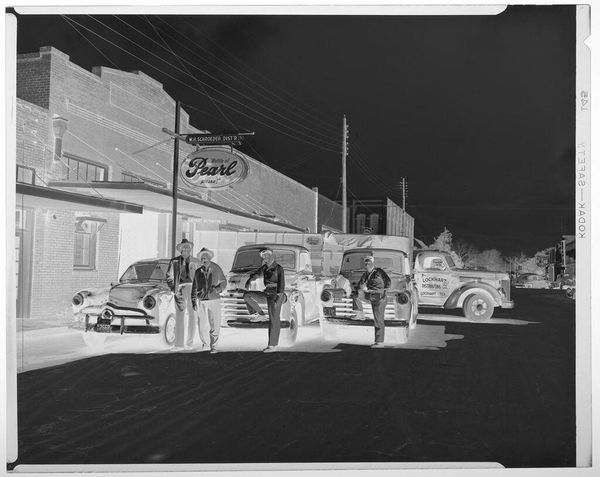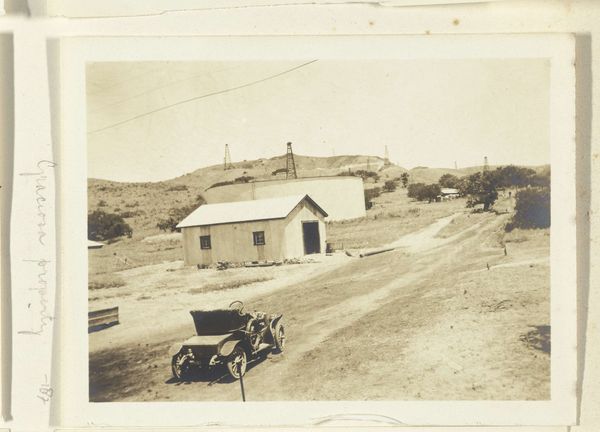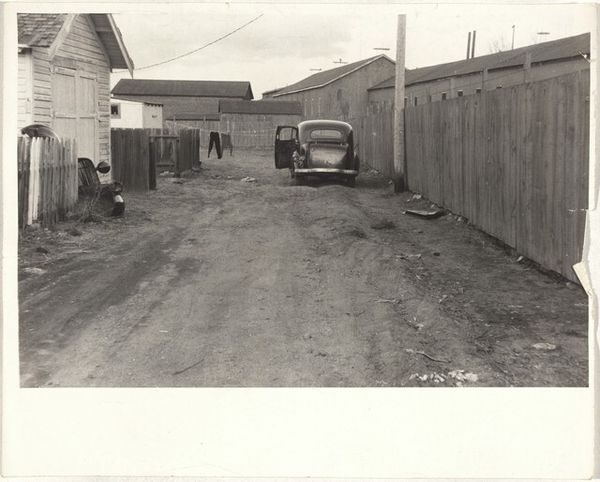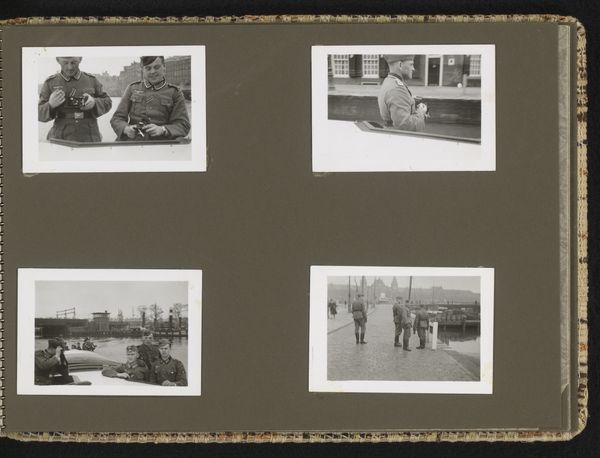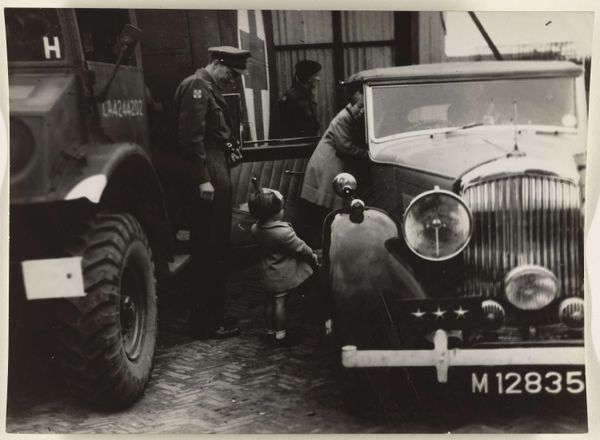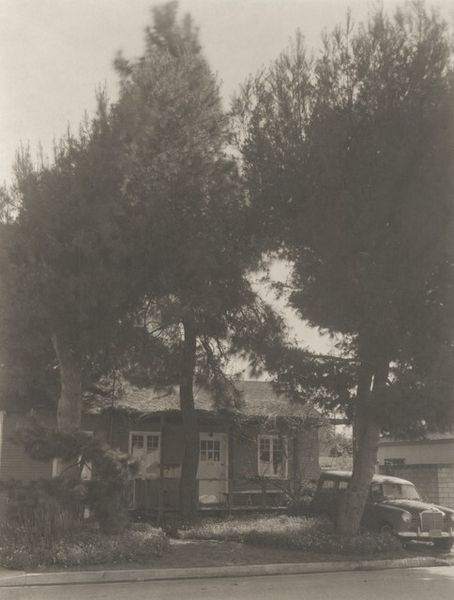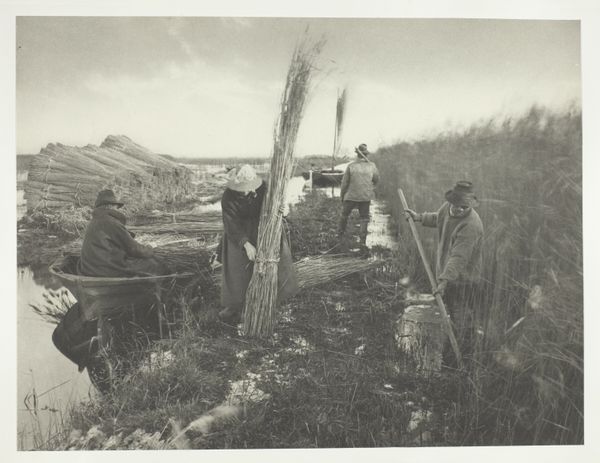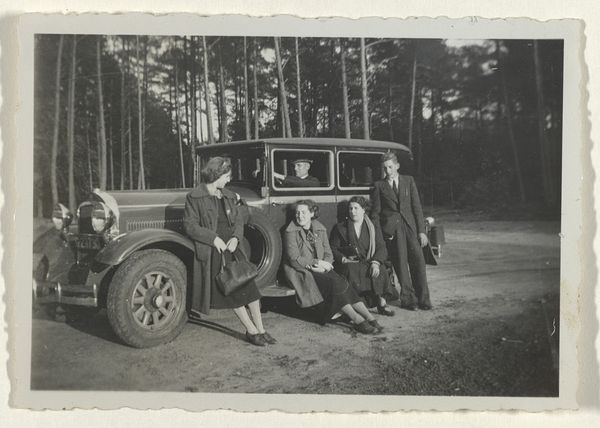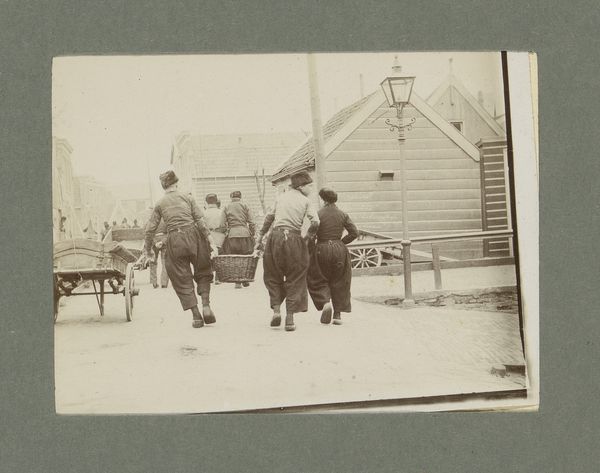
Dimensions: width 20.5 cm, height 15 cm
Copyright: Rijks Museum: Open Domain
Curator: Here we have "Nieuwe Duitse grenspost te Emmerich," a gelatin silver print attributed to the Associated Press, likely taken in 1949. What strikes you initially about it? Editor: It has a rather subdued, almost desolate quality. The gray tones and simple composition lend it a documentary feel, yet something feels staged, as though a play unfolds within the borders. Curator: Indeed. Considering the sociopolitical climate of post-war Germany, such starkness is resonant. This image freezes a moment at the new German border, capturing interactions between guards, women, a car awaiting clearance, and even a pile of building material—symbolic of a nation in reconstruction and redefining itself. Who is being allowed through, and on what grounds? How is national identity being reformed after its manipulation during the war? Editor: Semiotically, the arrangement of the elements is potent. The car bisects the visual field, drawing one's eyes to the architectural oddity in the distance—a church perched on a hilltop—suggesting continuity and history contrasting with the transience of the border crossing and the new beginning that the guard are imposing. Even the textures of the materials present—rough wood, worn stone, reflective metal—speak volumes. Curator: That interplay between the rebuilt and the enduring underscores the photograph's engagement with Germany's recovery narrative. The women stand near a heap of what looks like gravel or sand—perhaps indicating forced labor or the domestic burdens women had to bear in this era. Their stories must be considered in an intersectional framework. How do race, class, and gender converge to impact civilian women at this time? Editor: And, of course, let us not forget the interplay of light and shadow, casting an almost eerie ambiance. The lighting reinforces the geometry of the space, directing your eye. There's a strange detachment created between the viewer and the figures presented, as if witnessing a theater of bureaucracy. Curator: Absolutely. Ultimately, this image isn't simply about border control; it is an interrogation into who belongs, who decides, and how power dynamics manifest on both a geopolitical and personal level. Editor: The careful layering of the subjects within the visual field invites endless questions, creating tension in the viewing. A compelling capture.
Comments
No comments
Be the first to comment and join the conversation on the ultimate creative platform.
